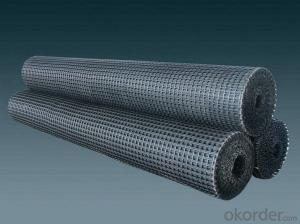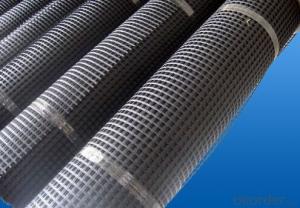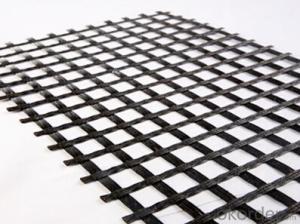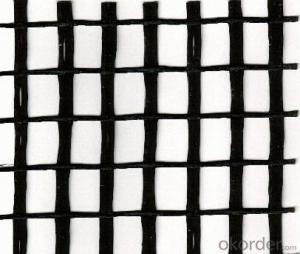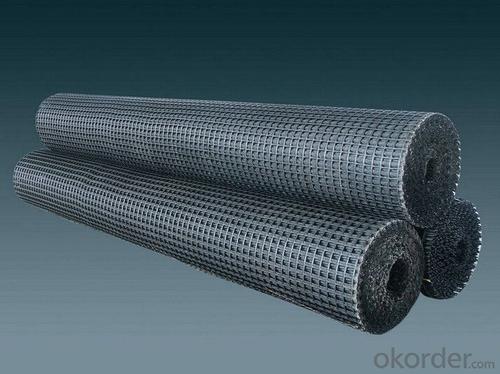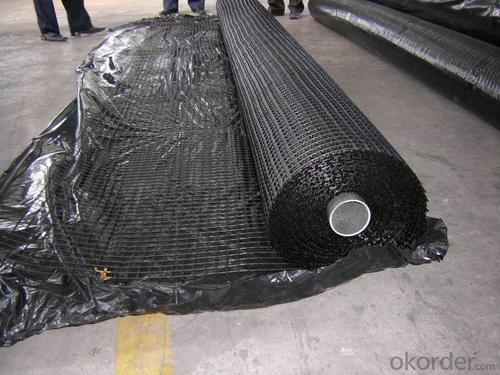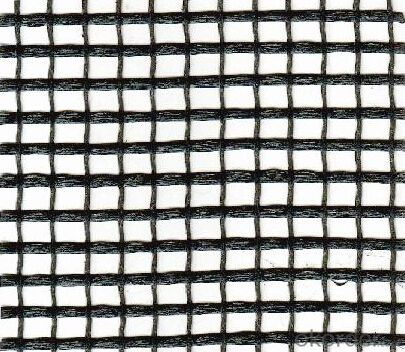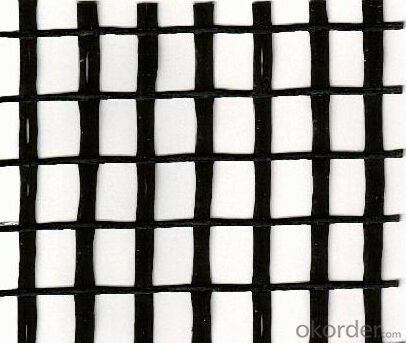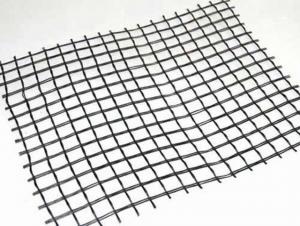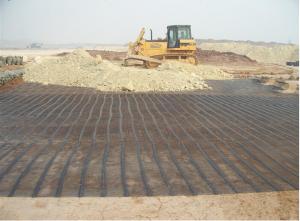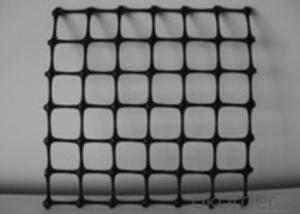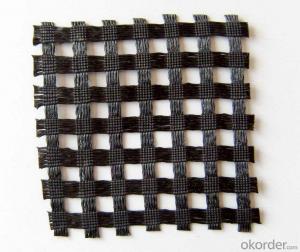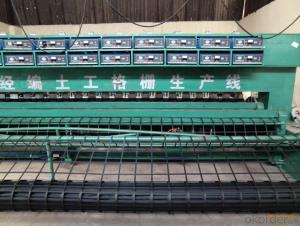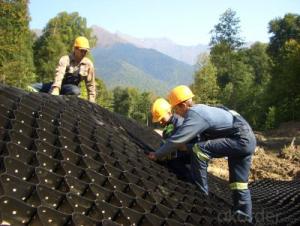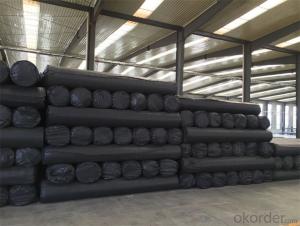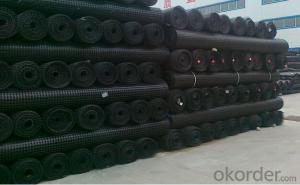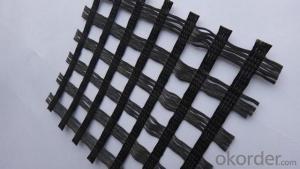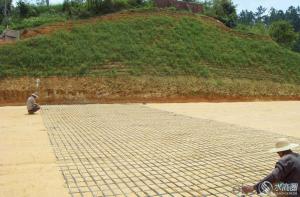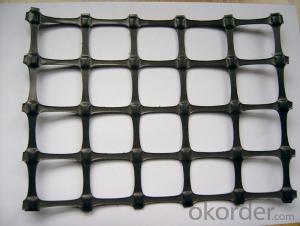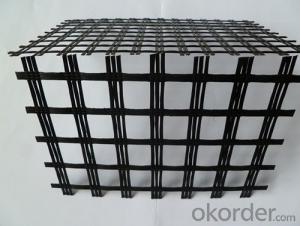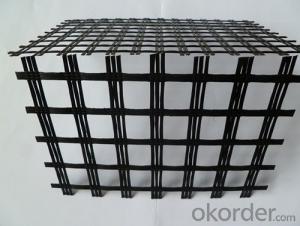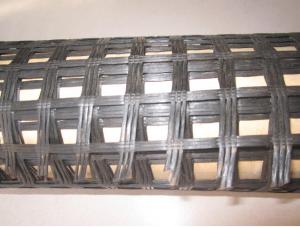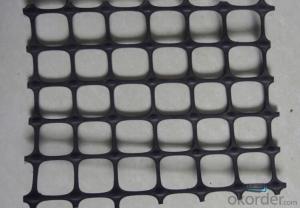Asphalt Reinforced Fiberglass Rail Track Reinforcement Geogrids
- Loading Port:
- Qingdao
- Payment Terms:
- TT OR LC
- Min Order Qty:
- 50000 m²
- Supply Capability:
- 2000000 m²/month
OKorder Service Pledge
OKorder Financial Service
You Might Also Like
Fiberglass Geogrid with Asphalt Reinforcement
Description Of Fiberglass Geogrid with Asphalt Reinforcement:
1. A kind of planar mesh material using alkali-free fiberglass yarn as base body and
then coated with high quality modified asphalt.
2. Warp knitted with oriental structure which gives full play of yarn strength and improves its mechanical property to make the product high tensile, tearing and creep-resistant.
3. Coated with asphalt making full protection of the fiberglass matrix and greatly
improving its wear and shear resistance.
4. Having a good performance in pavement strengthening, track cracking and solving
difficulties of strengthening the bituminous pavement.
Main Features of Fiberglass Geogrid with Asphalt Reinforcement:
1. Light weight, high tensile strength, high modulus, low elongation and good toughness.
2. Corrosion resistance, no long-term creep, long life span.
3. Good physical and chemical stability and good thermal stability.
4. Resistant to fatigue cracking, high-temperature track and low temperature shrinkage cracking.
5. Delaying and decreasing crack reflection.
Specifications of Fiberglass Geogrid with Asphalt Reinforcement:
Tensile Strength (KN) | Warp | >30 | >50 | >60 | >80 | >100 | >120 | >150 | >200 |
Weft | >30 | >50 | >60 | >80 | >100 | >120 | >150 | >120 | |
Elongation(%) | <4< p=""> | <4< p=""> | <4< p=""> | <4< p=""> | <4< p=""> | <4< p=""> | <4< p=""> | <4< p=""> | |
Mesh Size(mm) | 25.4*25.4 | 25.4*25.4 | 25.4*25.4 | 25.4*25.4 | 25.4*25.4 | 25.4*25.4 | 25.4*25.4 | 25.4*25.4 | |
Elastic Modulus | 76 | 76 | 76 | 76 | 76 | 76 | 76 | 76 | |
Width(m) | 1~6 | 1~6 | 1~6 | 1~6 | 1~6 | 1~6 | 1~6 | 1~6 | |
Length(m) | 50~300 | 50~300 | 50~300 | 50~300 | 50~300 | 50~300 | 50~300 | 50~300 | |
Temperature Resistant(℃) | -100~280 | -100~280 | -100~280 | -100~280 | -100~280 | -100~280 | -100~280 | -100~280 | |
Resin Content (%) | 18~20 | 18~20 | 18~20 | 18~20 | 18~20 | 18~20 | 18~20 | 18~20 | |
Glue Type | Bitumen PVC SBR soakage | Bitumen PVC SBR soakage | Bitumen PVC SBR soakage | Bitumen PVC SBR soakage | Bitumen PVC SBR soakage | Bitumen PVC SBR soakage | Bitumen PVC SBR soakage | Bitumen PVC SBR soakage | |
Applications of Fiberglass Geogrid with Asphalt Reinforcement:
1. Maintenance of old asphalt road reinforcement of asphalt pavement.
2. Converting old cement concrete road into composite road.
3. Restraining reflection cracking caused by block shrinkage.
4. Preventing and controlling the cracking caused by new and old combination and uneven settlement.
5. Road extension.
6. Reinforcement of soft soil foundation and overall strength of roadbed.
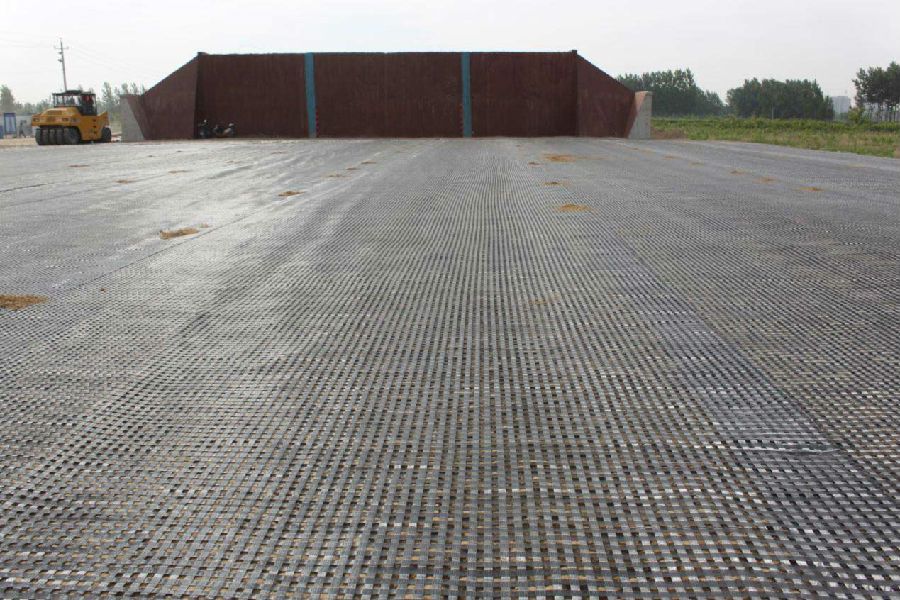
IMages of Fiberglass Geogrid with Asphalt Reinforcement:

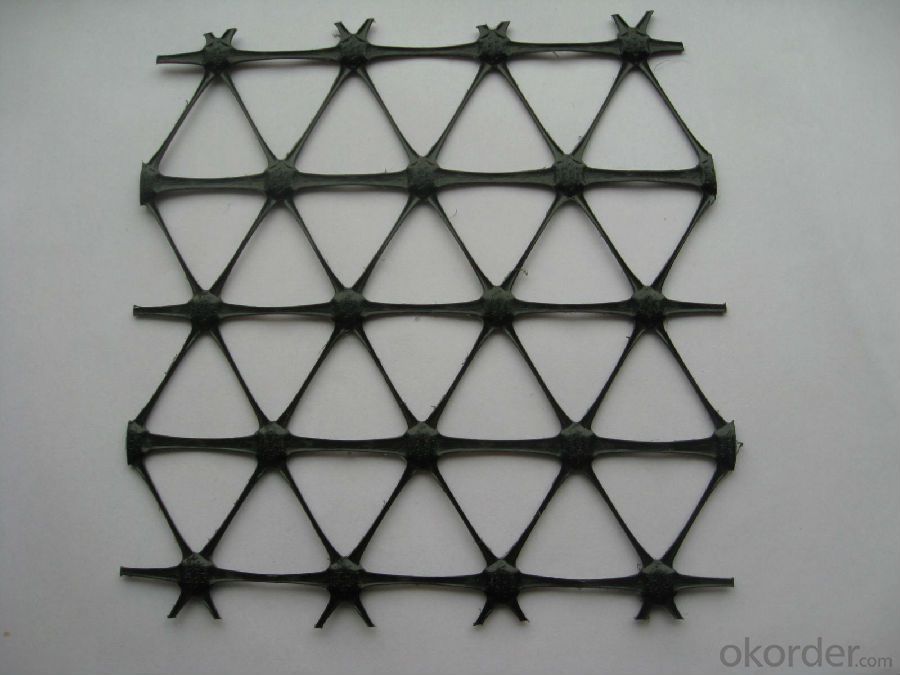
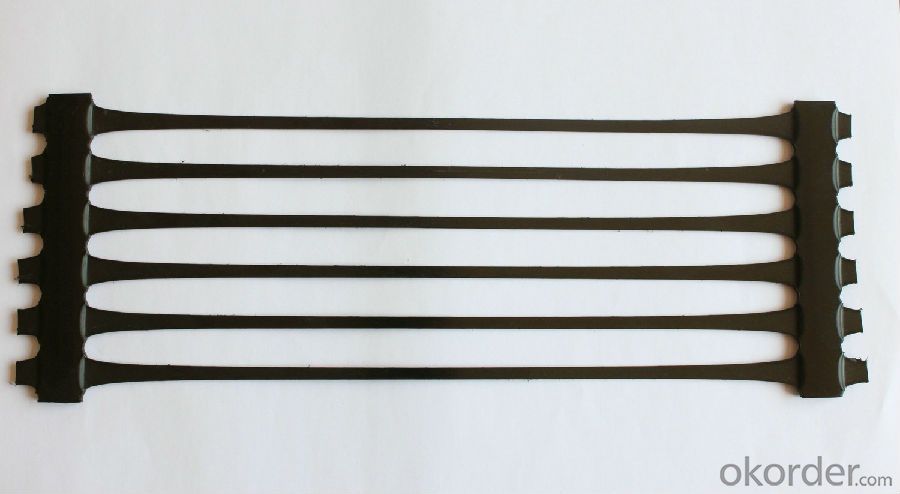
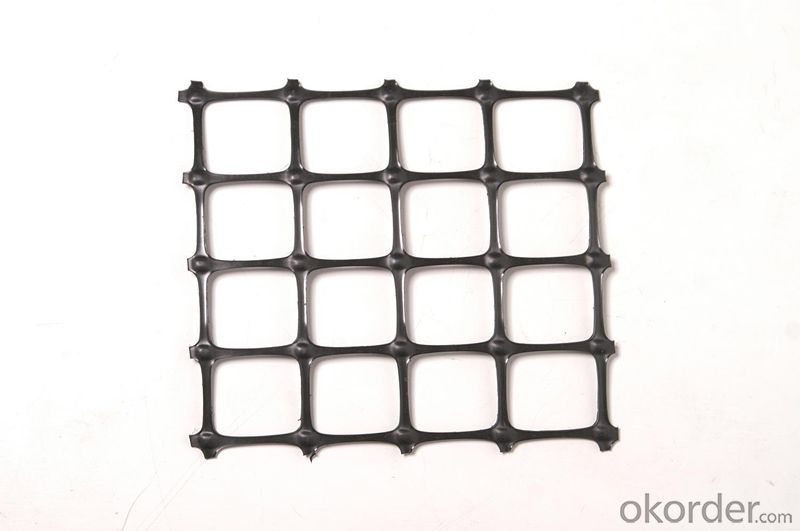

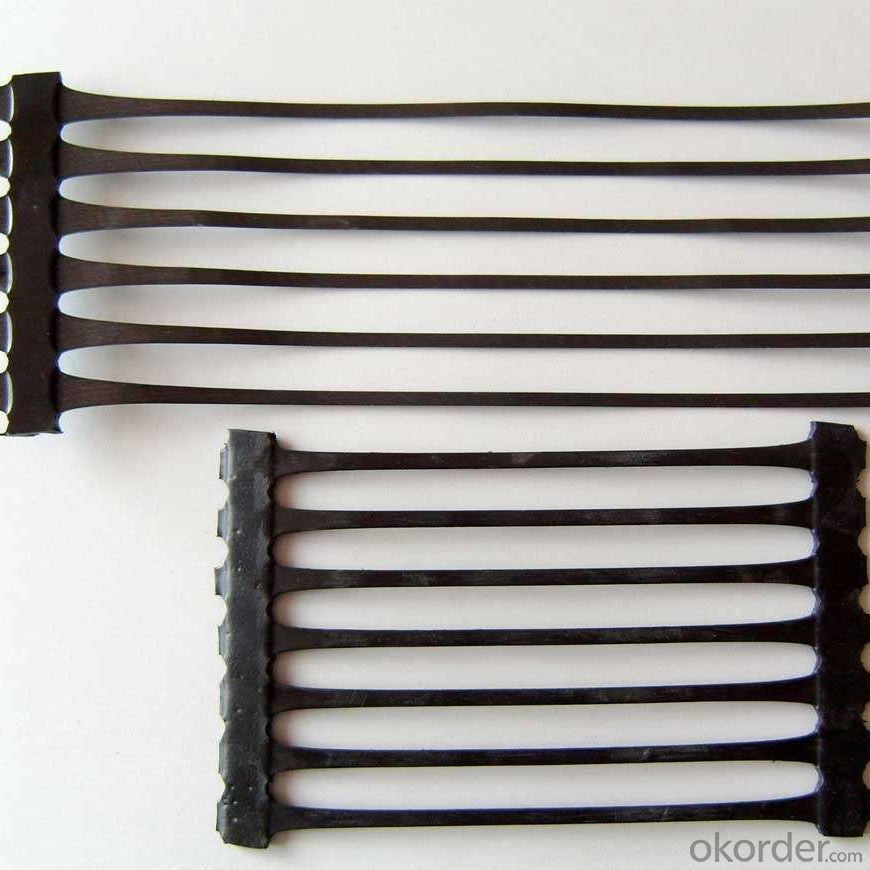

FAQ of Fiberglass Geogrid with Asphalt Reinforcement:
1. What are we supplying?
We are specialized in producing Geosynthetic materials, like Geogrid Series, HDPE Geocell, Geonet, Geotextile, Geomat, Tri Denmensional Composite Grainage Geonet, and Geomembrane Series.
.
2. How Many years experience do we have?
We have been exported to more than 20 countries in the past 15 years.
3. How long do we usually reply your request?
We always reply our customer within 24 hours.
- Q: Are geogrids suitable for use in slope stabilization for mining haul roads?
- Yes, geogrids are suitable for use in slope stabilization for mining haul roads. Geogrids are engineered materials that provide reinforcement and stability to soil, improving its load-bearing capacity. They are commonly used in various applications, including slope stabilization, to prevent soil erosion and maintain the integrity of the road. By distributing the load more evenly and reducing the potential for soil movement, geogrids enhance the safety and durability of mining haul roads.
- Q: What is the recommended geogrid aperture shape for specific applications?
- The recommended geogrid aperture shape for specific applications depends on various factors such as soil type, project requirements, and installation method. It is essential to consult with geotechnical engineers or geosynthetic specialists who can analyze the specific project needs and recommend the most suitable geogrid aperture shape, which can range from square to rectangular or triangular.
- Q: What are the factors that affect the cost-effectiveness of geogrids?
- The factors that affect the cost-effectiveness of geogrids include the quality and strength of the geogrid material, the size and complexity of the project, the type of soil being reinforced, the installation method, and the long-term performance and durability of the geogrid. Additionally, factors such as transportation and logistics costs, project timeline, and the availability of alternative solutions can also influence the overall cost-effectiveness of geogrids.
- Q: Can geogrids be used in agricultural applications?
- Yes, geogrids can be used in agricultural applications. They are commonly used for soil stabilization, erosion control, and reinforcement of slopes in agricultural fields. Geogrids help to improve soil structure, prevent erosion, and provide support for heavy machinery, making them beneficial for various agricultural activities.
- Q: What are the factors that affect the cost-effectiveness of geogrid-reinforced structures?
- There are several factors that can affect the cost-effectiveness of geogrid-reinforced structures. Firstly, the type and quality of the geogrid material used can significantly impact the overall cost. Higher-quality geogrids may initially be more expensive but offer better long-term performance, potentially reducing maintenance and repair costs over time. Additionally, the design and engineering of the structure play a crucial role. Properly designed geogrid-reinforced structures can optimize material usage and minimize construction costs. The expertise and experience of the engineers and contractors involved also contribute to the cost-effectiveness, as their knowledge can help avoid unnecessary expenses and ensure efficient construction. The specific site conditions, such as soil characteristics and slope stability, are also important factors. Geogrids are typically used to enhance soil stability, so the suitability of the soil for reinforcement and the extent of reinforcement required can impact costs. Difficult terrain, challenging access, or the need for additional site preparation can also increase costs. Lastly, the lifespan and durability of geogrid-reinforced structures should be considered. While geogrids are designed to be long-lasting, factors like environmental conditions, loading requirements, and proper installation can affect their performance. Investing in high-quality materials and proper installation methods may initially increase costs but can result in longer service life and reduced maintenance expenses in the long run.
- Q: How do geogrids help in reducing the risk of foundation settlement?
- Geogrids help in reducing the risk of foundation settlement by providing reinforcement and stability to the soil. They distribute the load from the foundation evenly, preventing excessive settlement or shifting of the soil. This helps to maintain the structural integrity of the foundation and minimize the potential for settlement-related damage.
- Q: See details of the application of design code for railway embankment geosynthetics TB10018-2006
- The vertical and horizontal strength fracture elongation is basically on the other side of the 2 point and sometimes the strength of the joint is required!
- Q: Can geogrids be used in erosion control applications on steep slopes?
- Yes, geogrids can be used in erosion control applications on steep slopes. Geogrids are often used to reinforce soil and prevent erosion by providing stability and support to the slope. They can effectively distribute loads and reduce the risk of slope failure, making them suitable for erosion control on steep slopes.
- Q: Three how much is the price of Geogrid
- Modulus, modulus, price range
- Q: What are the differences between uniaxial and biaxial geogrids?
- Uniaxial geogrids are designed to provide strength and stability in one primary direction, typically in the longitudinal or horizontal direction. On the other hand, biaxial geogrids are engineered to offer strength and stability in two perpendicular directions, both longitudinally and transversely. This allows biaxial geogrids to distribute loads more evenly and provide greater reinforcement in multiple directions.
Send your message to us
Asphalt Reinforced Fiberglass Rail Track Reinforcement Geogrids
- Loading Port:
- Qingdao
- Payment Terms:
- TT OR LC
- Min Order Qty:
- 50000 m²
- Supply Capability:
- 2000000 m²/month
OKorder Service Pledge
OKorder Financial Service
Similar products
Hot products
Hot Searches
Related keywords
